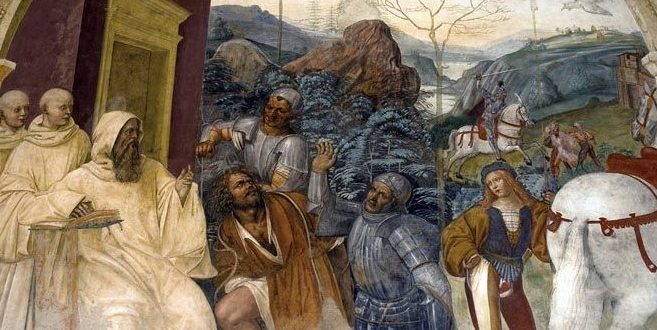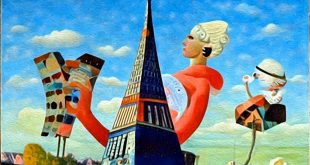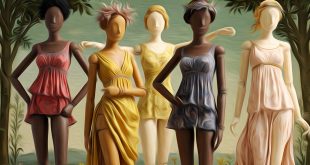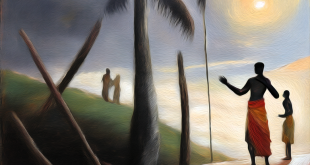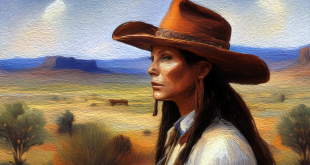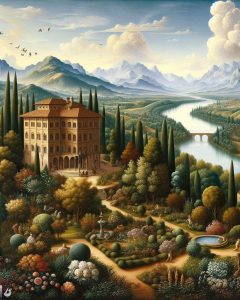 Being born is not enough. It is to be reborn that Italy awaits you
Being born is not enough. It is to be reborn that Italy awaits you
The Renaissance was a historical period that marked the transition from the medieval age to the modern age in Europe, between the 15th and 16th centuries. The Renaissance was characterized by a cultural, artistic, scientific and philosophical renewal, inspired by the recovery of the values of classical antiquity. The Renaissance originated in Italy, where several regional schools developed, such as the Florentine, Venetian, Roman and Lombard ones. The Renaissance then spread throughout Europe, influencing the culture, religion, politics and society of many countries. If you want to learn more about this topic, you can consult a website that I found for you with my research https://www.history.com/topics/renaissance/renaissance.
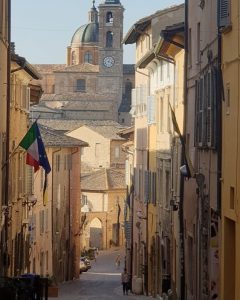 If you want to visit five places of the Italian Renaissance, we recommend some cities that were important centers of culture, art and politics in that era. Florence, where you can admire the Duomo, the Palazzo Vecchio, the Uffizi Gallery and the Ponte Vecchio. Pienza, the ideal city desired by Pope Pius II, who transformed it from a small medieval village into a masterpiece of Renaissance architecture, offers you the Cathedral, the Town Hall and the Bishop’s Palace. Urbino, which has the Palazzo Ducale as its symbol. Ferrara, which among the attractions to see offers the Estense Castle and the Palazzo dei Diamanti. Mantua, where among the places to discover you will find the Palazzo Ducale and the Rotonda di San Lorenzo. These are just some of the Italian Renaissance cities that are worth a visit. If you want to know more, you can consult the website https://www.travel365.it/citta-rinascimentali-italiane.htm.
If you want to visit five places of the Italian Renaissance, we recommend some cities that were important centers of culture, art and politics in that era. Florence, where you can admire the Duomo, the Palazzo Vecchio, the Uffizi Gallery and the Ponte Vecchio. Pienza, the ideal city desired by Pope Pius II, who transformed it from a small medieval village into a masterpiece of Renaissance architecture, offers you the Cathedral, the Town Hall and the Bishop’s Palace. Urbino, which has the Palazzo Ducale as its symbol. Ferrara, which among the attractions to see offers the Estense Castle and the Palazzo dei Diamanti. Mantua, where among the places to discover you will find the Palazzo Ducale and the Rotonda di San Lorenzo. These are just some of the Italian Renaissance cities that are worth a visit. If you want to know more, you can consult the website https://www.travel365.it/citta-rinascimentali-italiane.htm.
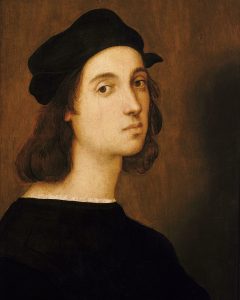 The painters of the Italian Renaissance were artists who revolutionized art with their techniques, their works and their visions. Among the many who contributed to this movement, we have chosen five particularly famous names. Leonardo da Vinci, the absolute genius of the Renaissance, was a painter and sculptor, inventor, engineer, anatomist and much more; Among his best-known works are The Mona Lisa, The Last Supper and The Annunciation. Michelangelo Buonarroti, a multifaceted artist, excelled in painting, sculpture and architecture; among his famous works are the David, the Pietà, the Sistine Chapel and St. Peter’s Basilica. Raffaello Sanzio, painter and architect, achieved perfection in the representation of beauty and harmony; Among his most admired works are the School of Athens, the Sistine Madonna and the Transfiguration. Tiziano Vecellio, an important representative of the Venetian school, became famous for his use of color and light; among his most significant works are the Venus of Urbino, the Portrait of Charles V and the Pesaro Altarpiece. Sandro Botticelli, on the other hand, was inspired by mythology and poetry; among his most enchanting works are Primavera, the Birth of Venus and the Madonna del Magnificat. These are just five of the many Italian Renaissance painters who left an indelible mark on the history of art. If you want to know more, you can visit this website https://www.artst.org/italian-renaissance-artists/.
The painters of the Italian Renaissance were artists who revolutionized art with their techniques, their works and their visions. Among the many who contributed to this movement, we have chosen five particularly famous names. Leonardo da Vinci, the absolute genius of the Renaissance, was a painter and sculptor, inventor, engineer, anatomist and much more; Among his best-known works are The Mona Lisa, The Last Supper and The Annunciation. Michelangelo Buonarroti, a multifaceted artist, excelled in painting, sculpture and architecture; among his famous works are the David, the Pietà, the Sistine Chapel and St. Peter’s Basilica. Raffaello Sanzio, painter and architect, achieved perfection in the representation of beauty and harmony; Among his most admired works are the School of Athens, the Sistine Madonna and the Transfiguration. Tiziano Vecellio, an important representative of the Venetian school, became famous for his use of color and light; among his most significant works are the Venus of Urbino, the Portrait of Charles V and the Pesaro Altarpiece. Sandro Botticelli, on the other hand, was inspired by mythology and poetry; among his most enchanting works are Primavera, the Birth of Venus and the Madonna del Magnificat. These are just five of the many Italian Renaissance painters who left an indelible mark on the history of art. If you want to know more, you can visit this website https://www.artst.org/italian-renaissance-artists/.
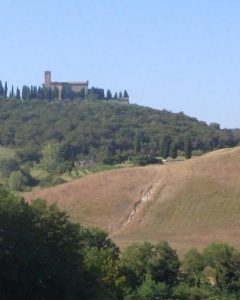 There are Italian cities that played an important role in the Renaissance, but which are less known than the more famous ones. Among these cities, Pistoia preserves religious buildings in Renaissance style, such as the Cathedral of San Zeno, the Palazzo Pretorio and the Palazzo dei Vescovi. Pavia, however, was the seat of a prestigious university and a ducal court where illustrious artists worked. Arezzo was home to the poet Petrarca, the painter Piero della Francesca and the musician Francesco Corteccia. Parma hosted artists such as Correggio, Parmigianino and Antelami. Lecce, finally an Apulian city that was an example of Baroque architecture, includes among its most notable works the Basilica of Santa Croce, the Cathedral and the Castle of Charles V. If you would like to ask me more about a specific city of the Italian Renaissance, I am here to help you: I couldn’t help but recommend you go and visit the Monastery of Sant’Anna in Camprena https://www.visittuscany.com/it/attrazioni/santanna-in-camprena/, located in the Val d’Orcia , in the province of Siena. The scene of the frescoes and the flight takes place in that church in the film The English Patient https://www.cinematographe.it/rubriche-cinema/focus/il-paziente-inglese-storia-vera-film/. In that film, Count Almásy and Katharine Clifton take refuge in the monastery and fall in love in front of the frescoes. This monastery, founded in 1324, preserves inside a chapel frescoed by the Renaissance painter Sodoma.
There are Italian cities that played an important role in the Renaissance, but which are less known than the more famous ones. Among these cities, Pistoia preserves religious buildings in Renaissance style, such as the Cathedral of San Zeno, the Palazzo Pretorio and the Palazzo dei Vescovi. Pavia, however, was the seat of a prestigious university and a ducal court where illustrious artists worked. Arezzo was home to the poet Petrarca, the painter Piero della Francesca and the musician Francesco Corteccia. Parma hosted artists such as Correggio, Parmigianino and Antelami. Lecce, finally an Apulian city that was an example of Baroque architecture, includes among its most notable works the Basilica of Santa Croce, the Cathedral and the Castle of Charles V. If you would like to ask me more about a specific city of the Italian Renaissance, I am here to help you: I couldn’t help but recommend you go and visit the Monastery of Sant’Anna in Camprena https://www.visittuscany.com/it/attrazioni/santanna-in-camprena/, located in the Val d’Orcia , in the province of Siena. The scene of the frescoes and the flight takes place in that church in the film The English Patient https://www.cinematographe.it/rubriche-cinema/focus/il-paziente-inglese-storia-vera-film/. In that film, Count Almásy and Katharine Clifton take refuge in the monastery and fall in love in front of the frescoes. This monastery, founded in 1324, preserves inside a chapel frescoed by the Renaissance painter Sodoma.
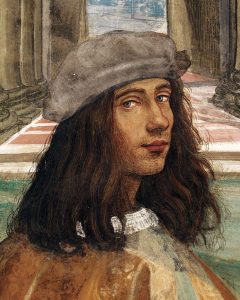 Sodom’s self-portrait, an oil on panel painting created between 1515 and 1520, depicts himself in the guise of Judas Iscariot. The painting is part of a detached fresco with the Capture of Christ, located in the church of San Bartolomeo in San Quirico d’Orcia https://www.borghiditoscana.net/san-quirico-dorcia/, in the province of Siena. He drew back with a severe and melancholy countenance, with a red beard and a black hat. His gaze is turned towards the viewer, as if to challenge him. The self-portrait, a source of inspiration for other artists, is considered one of the masterpieces of the Italian Renaissance, due to its expressive intensity. For his search for dramatic effects and idealized beauty he is considered one of the precursors of mannerism. Giovanni Antonio Bazzi, Italian Renaissance painter, born in Vercelli in 1477 and died in Siena in 1549, called himself Sodoma https://www.wikiart.org/it/il-sodoma. With great skill in color and drawing, he painted in a style that combined influences from the Lombard, Florentine and Roman schools. Among his other works, in addition to the frescoes in the Monastery of Sant’Anna in Camprena, those with the Stories of San Benedetto in the Abbey of Monte Oliveto Maggiore, as well as the San Sebastiano in the National Art Gallery of Siena, where he was the master of many local painters, including Domenico Beccafumi and Girolamo del Pacchia.
Sodom’s self-portrait, an oil on panel painting created between 1515 and 1520, depicts himself in the guise of Judas Iscariot. The painting is part of a detached fresco with the Capture of Christ, located in the church of San Bartolomeo in San Quirico d’Orcia https://www.borghiditoscana.net/san-quirico-dorcia/, in the province of Siena. He drew back with a severe and melancholy countenance, with a red beard and a black hat. His gaze is turned towards the viewer, as if to challenge him. The self-portrait, a source of inspiration for other artists, is considered one of the masterpieces of the Italian Renaissance, due to its expressive intensity. For his search for dramatic effects and idealized beauty he is considered one of the precursors of mannerism. Giovanni Antonio Bazzi, Italian Renaissance painter, born in Vercelli in 1477 and died in Siena in 1549, called himself Sodoma https://www.wikiart.org/it/il-sodoma. With great skill in color and drawing, he painted in a style that combined influences from the Lombard, Florentine and Roman schools. Among his other works, in addition to the frescoes in the Monastery of Sant’Anna in Camprena, those with the Stories of San Benedetto in the Abbey of Monte Oliveto Maggiore, as well as the San Sebastiano in the National Art Gallery of Siena, where he was the master of many local painters, including Domenico Beccafumi and Girolamo del Pacchia.
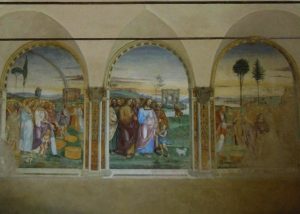 The Monastery of Sant’Anna in Camprena https://aleteia.org/2018/07/31/a-journey-to-st-anne-in-camprena-the-english-patient-monastery/, is located near Pienza, it was founded in 1324 by Bernardo Tolomei, as a hermitage for the Olivetan monks. Its frescoes, are a beautiful example of Renaissance art in Tuscany. They were painted by Sodoma between 1503 and 1504, in the refectory of the monastery. The frescoes depict scenes from the life of Saint Benedict, the founder of the Benedictine order, as well as the Madonna and Child, Saint Anna, and a Pietà. The frescoes are characterized by a vivid use of color, a realistic representation of space and light, and a graceful expression of emotion. If you are interested in visiting the monastery, you can find more information on their web site https://www.tuscanychic.com/monastery-of-sant-anna-in-camprena/. You can also stay at the monastery, which is now an agritourism center, and enjoy the peaceful atmosphere and the stunning landscape of the Val d’Orcia.
The Monastery of Sant’Anna in Camprena https://aleteia.org/2018/07/31/a-journey-to-st-anne-in-camprena-the-english-patient-monastery/, is located near Pienza, it was founded in 1324 by Bernardo Tolomei, as a hermitage for the Olivetan monks. Its frescoes, are a beautiful example of Renaissance art in Tuscany. They were painted by Sodoma between 1503 and 1504, in the refectory of the monastery. The frescoes depict scenes from the life of Saint Benedict, the founder of the Benedictine order, as well as the Madonna and Child, Saint Anna, and a Pietà. The frescoes are characterized by a vivid use of color, a realistic representation of space and light, and a graceful expression of emotion. If you are interested in visiting the monastery, you can find more information on their web site https://www.tuscanychic.com/monastery-of-sant-anna-in-camprena/. You can also stay at the monastery, which is now an agritourism center, and enjoy the peaceful atmosphere and the stunning landscape of the Val d’Orcia.
 To broaden your horizon of knowledge about other painters, you can type http://meetingbenches.com/category/paintings/. The sole purpose of this site is to spread the knowledge of these artists and that other people enjoy their works. The property of the images that appear in this blog correspond to their authors.
To broaden your horizon of knowledge about other painters, you can type http://meetingbenches.com/category/paintings/. The sole purpose of this site is to spread the knowledge of these artists and that other people enjoy their works. The property of the images that appear in this blog correspond to their authors.
 Meeting Benches World art in all forms
Meeting Benches World art in all forms
